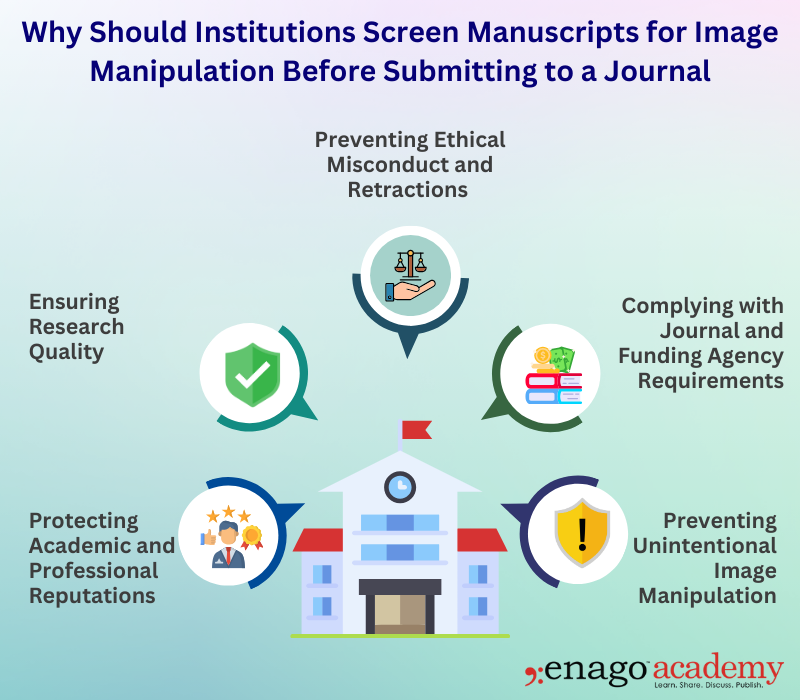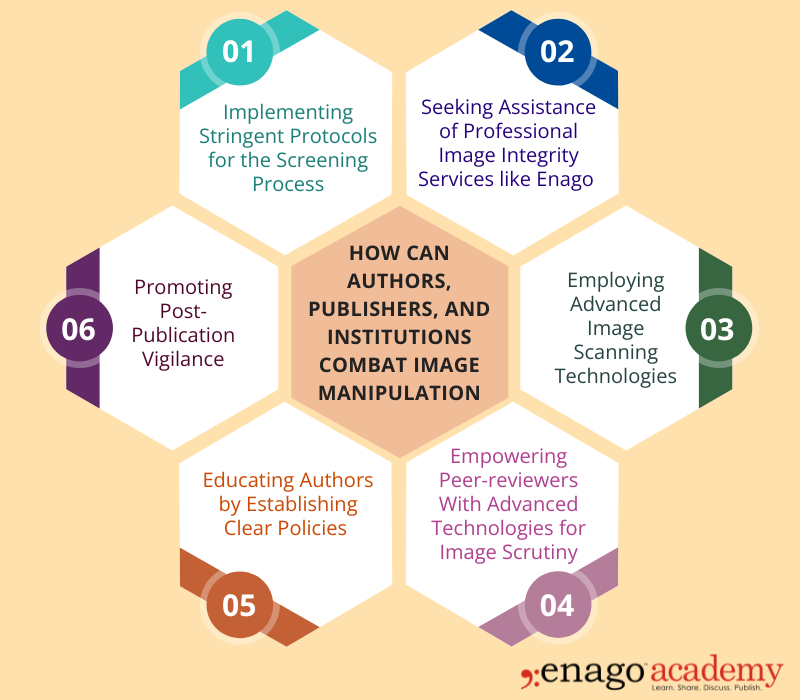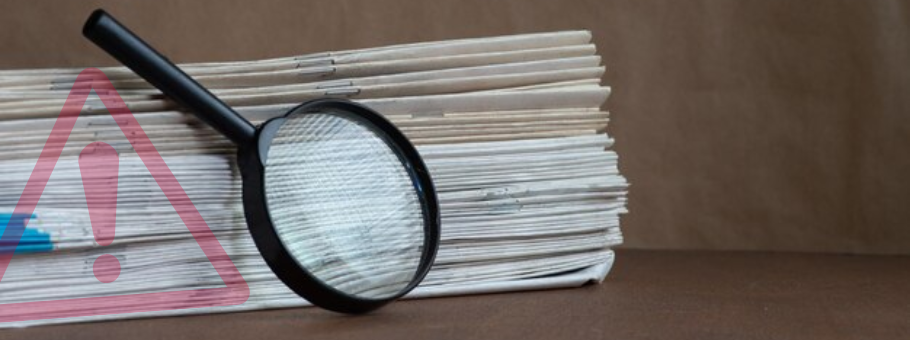Preventing Image Manipulation With Expert Assistance

Academic publishing is witnessing a surge in retractions of published research due to image manipulation. Several cases of retraction have highlighted the need for vigilant image scrutiny in manuscripts. Various incidents, including a recent case of a neuroscientist whose work helped pave the way for an Alzheimer’s drug candidate was indicted of fraud, have highlighted the potential of manipulated images in distorting scientific conclusions.
Although journals have tightened their policies and implemented stringent protocols to counter this issue, it is necessary for authors and institutions to screen manuscript for potential cases of image manipulation. Through a rigorous gate-keeping process, journals and institutions can uphold the integrity of published research.
Importance of Scanning Manuscript for Image Manipulation
Image fraud, whether intentional or unintentional can lead to misinformation or false and misleading research findings. Additionally, these incidents can damage public confidence in research. Furthermore, it can damage the reputation of the involved researchers and their institution, and may result in severe career setbacks. Therefore, it becomes important for every stakeholder involved in the research publishing process to screen manuscript for image fraud.
For Journals and Publishers
Here are several reasons why it is important for publishers and journals to rigorously scan for image manipulation:
1. Ensuring Research Integrity
The primary mission of the editorial process is to publish high-quality, trustworthy research. Therefore, by scanning manuscripts for image manipulation, journals can ensure accuracy and reliability in the published research, maintaining integrity of the scientific record.
2. Upholding Public Trust
Image manipulation when detected post-publication, can severely damage the public trust towards the editorial and peer review process. Journals that implement robust scanning protocols can avoid publishing manipulated or false research findings, which helps in building public confidence towards the editorial systems.
3. Reducing Retractions
Retractions can tarnish image of the journals publishing affected papers. Therefore, by  proactively scanning manuscripts for image manipulation, journals can reduce the incidence of retractions, preserving reputation and trust of their readership.
proactively scanning manuscripts for image manipulation, journals can reduce the incidence of retractions, preserving reputation and trust of their readership.
4. Supporting Peer Review Process
The peer review process has its limitations, particularly in detecting image manipulation. By employing advanced image scanning technologies, journals can add a layer of assessment in the manuscript scrutiny process. Furthermore, this can support reviewers in examining manuscripts and enhance the overall robustness of the process.
5. Protecting the Scientific Record
The scientific record is built on the existing research findings. Image manipulation can corrupt this record, leading to incorrect theories, wasted resources, and potential harm if flawed research is applied in practice.
Research misconduct is a serious ethical violation. By implementing stringent screening processes and technologies, journals can promote ethical research practices and prevent manipulators from attempting to publish fraudulent data.
For Institutions
Due to the rising cases of image manipulation, several journals have integrated technologies for detecting image fraud in their editorial systems. Furthermore, in areas like biological and clinical sciences, images have a significant role in conveying research findings or results. Therefore, manipulating them can result in misinformation, which can have a broader implication on the future studies.
As a result, it becomes important for universities or institutions to scan image manipulation or duplication before sharing it for publication. This not only helps institutions to avoid manuscript rejection due to ethical issues but also highlights their commitment towards publishing credible research.

By prioritizing the detection and prevention of image fraud at an institutional level, we can build a culture of integrity and accountability. Moreover, it educates the future researchers about the importance of following the ethical standards of research publishing.
Combating Image Manipulation
In the pre-publication phase, it is important for the editors and peer-reviewers to screen manuscripts and verify the authenticity of the images. As a result, it is imperative for them to consider reliable image manipulation detection services.
Here’s how authors, publishers, and institutions can combat image manipulation.

The advent of AI tools and techniques has made it easier to manipulate and duplicate images. These technological advancements have introduced new challenges, such as the ability to create deep-fakes or subtly alter images in ways that are difficult to detect manually. This calls for the need to use reliable AI-based image fraud detection services to counter them.
Using Image Manipulation Detection Services
Given the complexities in detecting image manipulation, specialized services like Enago’s Image Manipulation Detection Services have become invaluable. However, it can be tedious to scrutinize each image’s authenticity. To counter this issues, journals or publishers can use reliable image manipulation detection service like Enago.
By using professional graphical software and expert human verification to screen images, Enago’s Image Manipulation Detection Services detects the following types of image fraud:
1. Duplication of images and image elements
2. Slight changes in the color, tone, brightness, contrast, exposure, and filter application
3. Anomalous artefacts
4. Selective enhancement, erasure, blurring or blocking image sections
5. Merging of multiple images and addition of elements like lines, patches, or text
6. Flipping, rotation, compression, and stretching
Screening manuscript for image manipulation or other types of misconduct can improve the data authenticity in the published papers. Furthermore, it emphasizes the stakeholder’s commitment towards promoting ethical publishing practices and ensuring reliable research output.
The battle against image manipulation in academic publishing is an ongoing endeavor that requires the concerted efforts of authors, institutions, publishers, and specialized services. Therefore, by implementing rigorous screening processes and seeking assistance of specialized services, we can reduce the incidence of image fraud.
Ultimately, combating image manipulation is not just about preventing fraud or educating researchers to avoid retractions. It’s about preserving the integrity of the scientific record, maintaining public trust in research, and ensuring that scientific progress is built on a foundation of honest and accurate data.









